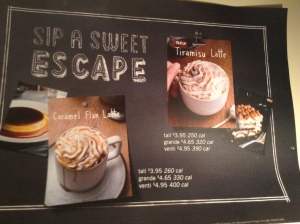
What would happen if you reframed your outlook to “Feeling excited?”
What keeps you from getting things done?
I mean, come on, you’re smart. Capable. You were never really unable to do anything.
Perhaps you procrastinated and put things off. Or you felt too busy to accomplish it.
Whatever your reason for falling behind on that one thing (or 5 things) you know you needed to get done, I suspect your inner dialogue wasn’t helping.
Because when you’re faced with a task that feels insurmountable, you always give yourself a reason for why you can’t do it. Such as, “This feels insurmountable.”
Or, “I always fail.”
Or perhaps, “I’m stressed. I need to watch Netflix for 5 hours.”
You may not say it aloud or even realize you’re doing it, but deep down, you’re telling yourself, “I can’t do this.”
And why do you give yourself that lame excuse?
…when you’re faced with a task that feels insurmountable, you always give yourself a reason for why you can’t do it.
Well, because the task ahead of you made you anxious. And you were afraid you couldn’t do it perfectly, so you avoided it.
Simple, really.
However… if you want to crush that task on your plate right now, you need to recognize it makes you feel anxious, and not avoid that bad feeling. Or else, you’ll just distract yourself and never be able to confront your procrastination.
“I’m stressed. I need to watch Netflix for 5 hours.”
Go ahead. Say it.
“This makes me feel anxious.”
Easy. Say it again.
“I feel anxious.”
“I can’t do this.”
And why do you give yourself that lame excuse?
Now, here’s the meat. What if you could reframe that anxiety into something positive? And instead of giving into your anxiety, change your attitude?
So, instead of saying, “I feel anxious“ — try saying this instead…
“I feel excited.”
Go ahead. Say it.
“I feel excited.”
Repeat it.
“I feel excited.”
It’s not that you’re denying your feelings of anxiety. In fact, deciding you feel excited won’t lower your anxiety. You’re just setting yourself up for success instead of failure.
Exchanging the negative word “anxious” for “excited” is called Anxious Reappraisal. It’s a way of anticipating a positive outcome instead of a negative consequence.
Go ahead. Say it. “I feel excited.” Repeat it. “I feel excited.”
Because, I think, we bring ourselves down every day by expecting the worst. And what happens?
You see the worst in every situation and you become blind to the positive. In your mind, the negative grows over time until it’s this prickly, thick entity hovering above you, causing you more fatigue and a stormy outlook. And as a result, you start to lose personal motivation and no longer feel you can reach your goals in life.
After a while, you think to yourself, “I can’t do this. I just can’t.”
Time to turn that anxiety on its head!
…deciding you feel excited won’t lower your anxiety. You’re just setting yourself up for success instead of failure.
Don’t let yourself slip into a negative perspective, because our perspectives shape our reality. It’s true. You’re not lying to yourself in being positive and saying, “I feel excited about this thing I don’t quite know if I’ll succeed at.” You’re just looking for a helpful pathway through your challenges instead of pointing out the negatives and eventually getting bogged down in your head.
In your mind, the negative grows over time until it’s this prickly, thick entity hovering above you, causing you more fatigue and a stormy outlook.
To relate all of this to copywriting, let me tell you quick story. Okay?
Some months ago, my boss here at my ad agency gave me an assignment to write promoted Facebook copy. The assignment made me feel super anxious.
Internally, I was feeling, “I am anxious right now.”
But for some reason at the time, I was also feeling tenacious. So I said to myself, “Screw my anxiety. This copy is going to AWESOME!”
You’re not lying to yourself in being positive and saying, “I feel excited about this thing I don’t quite know if I’ll succeed at.”
And it turned out being just that. I blasted into writing the copy with this vigor and excitement, and the post ended up pulling in 800+ Shares and thousands of Facebook reactions. It was the most successful promoted content we’d done on that Facebook page for months.
Somehow, I believe my declaration helped me. If I had been timid about the project and said to myself, “I feel anxious about this. Ugh, I guess I’ll get to it then,” I think the copy probably would’ve sucked.
In a way, making a positive declaration to yourself before entering any project sets up a self-fulfilling prophecy, which is more likely to come true simply by expecting a good outcome.
So I said to myself, “Screw my anxiety. This copy is going to AWESOME!”
In a personal letter, David Ogilvy explained what happens when he actually sits down to write copy:
“…I go home and sit down at my desk. I find myself entirely without ideas. I get bad-tempered. If my wife comes into the room I growl at her. (This has gotten worse since I gave up smoking.)”
He also indicates in another work that whenever he sits down to write, he knows he’s doomed to failure. But once he eases into the task with a lot of input from colleagues and research, he ends up getting the thing done.
So take heart. Getting stuff done is just about never a clean process even for the best of us.
However, by changing your “I feel anxious” to “I feel excited,” you just might find yourself feeling happier, more productive, creative, and successful than if you stuck with “I feel anxious. I don’t want to do this.”
Making a positive declaration to yourself before entering any project sets up a self-fulfilling prophecy, which is more likely to come true simply by expecting a good outcome.
Even Ogilvy admits:
“Altogether it is a slow and laborious business. I understand that some copywriters have much greater facility.”
Be that person with “much greater facility.” You’re intelligent, capable, and you know you can do it.
All it takes is convincing yourself.
Now, say “I’m excited about that project” and experience first-hand the more positive outcome.
Email me at copyweber@gmail.com if you want to reach out. I’d love to hear from you.











